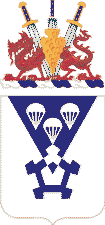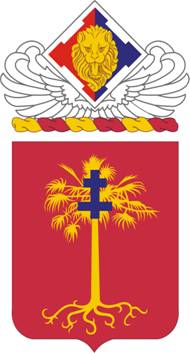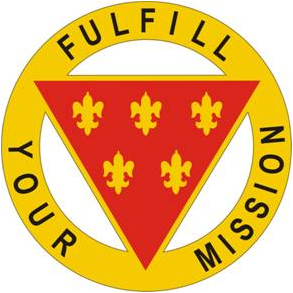History
Nuclear battlefields
The addition of mechanization to army forces led to rapid changes in doctrine. During World War I the defensive firepower of infantry forces and especially their associated artillery made manoeuvrability almost impossible without overwhelming numbers. Any breakthrough could be countered by reserve forces that moved at the same speed as the attacking forces.
With the introduction of the first tanks, much smaller forces could effect a breakthrough, and move much more rapidly than the defending infantry. Ideally, this would force the defenders to retreat to new lines in order to maintain a front line. By the start of World War II, this basic concept had developed into the idea of a "spearhead", a dense formation of highly mobile forces that would concentrate at a single point, overwhelm them locally, and then run into the lightly defended rear areas. This became known as Blitzkrieg after its initial successful employment by the German forces.
Nuclear weapons dramatically upset this concept. In a nuclear battlefield, the concentration of forces into a spearhead would present a perfect target for the employment of tactical nuclear weapons. A single well-placed weapon could break up the attacking forces before they even had time to properly prepare, causing enough casualties to make them ineffective even in the defence. In the battles foreseen by planners in the 1950s, traditional infantry and armored units appeared to be extremely vulnerable.
It was this weakness that led first to the New Look of 1953, and then to the "New" New Look of 1955. The latter, especially, aimed to counter any Warsaw Pact action in Europe with the use of nuclear weapons on the battlefield, allowing NATO's superior airpower to destroy the Warsaw Pact's massed armor. As part of this shift in policy, the majority of US military development and funding was sent to the US Air Force and US Navy; the Army was, to a degree, ignored.
Implementation

In July 1955, General Maxwell D. Taylor became the Chief of Staff of the United States Army and selected General William Westmoreland as his Secretary to the General Staff. Westmoreland recalled that Taylor was told by President Dwight Eisenhower that he had to do something to give the Army "charisma"; something in Westmoreland's words to give the Army a "modern look".
Taylor designed the Pentomic concept with the basic concept being to reduce the time needed to organize an attack, thereby reducing the time available for the enemy to respond with a nuclear strike. To do this, the Pentomic concept organized what would normally be parts of several different units into a more balanced division, reducing the need for communications between different command structures that would introduce delays.
After Taylor designed the Pentomic concept, he promoted Westmoreland to become what was then the youngest major general in the US Army to command Taylor's former wartime command, the recently reactivated 101st Airborne Division. This would be the first unit to be reconfigured in the Pentomic structure. [2]
American army officers felt the plan was "ill started, ill fated and hopefully short lived" with some thinking it was a scheme of Taylor's to increase the number of active divisions in the Army when he had actually cut their combat manpower. [3]
Westmoreland recalled that the pentomic structure, with all its flaws, was a creature of the Chief of Staff, and any officer who valued his career was loath to criticise it. [4] Westmoreland also briefed all officers in the division that "Our job is not to determine whether it will work—our job is to make it work". Following the end of Westmoreland's command of the 101st in 1960 he recommended that the pentomic structure be abolished. [5]
Lineages
When the U.S. Army division was reorganized under the pentomic structure in 1957, the traditional regimental organization employed by the Army was to be eliminated. This raised questions as to what the new units were to be called, how they were to be numbered, and what their relationship to former organizations was to be. Many of the Army's senior officers were determined to perpetuate the historic lineages of the Army, unlike the situation after the Civil War when the Grand Army of the Republic persuaded Congress to forbid the linkage between the Civil War era Union Army Corps and the new Corps organized for the Spanish–American War.
On 24 January 1957, the Secretary of the Army approved the U.S. Army Combat Arms Regimental System (CARS) concept, as devised by the Deputy Chief of Staff for Personnel, which was designed to provide a flexible regimental structure that would permit perpetuation of unit history and tradition in the new tactical organization of divisions, without restricting the organizational trends of the future. [6]
Separate brigades were organized with two or three battle groups. The 2nd Infantry Brigade was organized as follows: [7]
- Headquarters & Headquarters Company
- 1st Battle Group, 4th Infantry
- 2nd Battle Group, 60th Infantry
- 3rd Battalion, 4th Artillery
- 1st Battalion, 76th Artillery
- Troop F, 5th Cavalry
- Company F, 34th Armor
- Company G, 34th Armor
- Brigade Trains
- 232nd Engineer Company (Combat)
- 712th Engineer Company (Combat)
End of Reorganization of the Current Infantry Division (ROCID)
In December 1960, the Army began studying proposals to reorganize again that was hastened by newly elected President John F. Kennedy's "Doctrine of Flexible Response". This led to the Reorganization Objective Army Division (ROAD) initiative by 1963.














